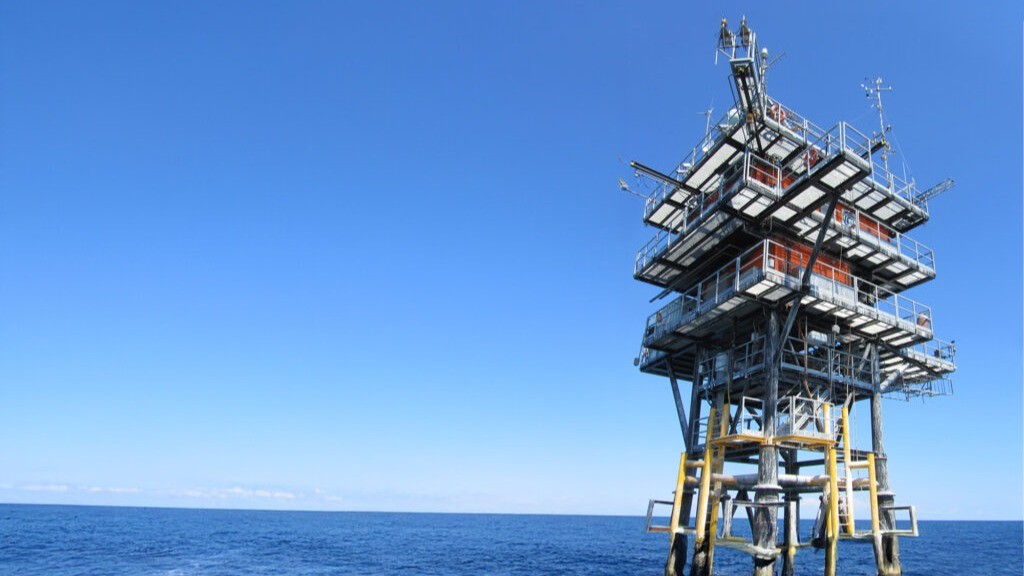A team of ocean optics experts, led by Plymouth Marine Laboratory, evaluated the accuracy of above-water optical sensors, using a community-developed processor, to produce the highest quality data for satellite ocean colour validation and facilitate monitoring the health of our coastal seas and global ocean. The international study team of world experts in ocean optics from the EU and USA performed a 10 day test by the CNR-ISMAR infrastructure “Piattaforma Acqua Alta” in the Adriatic Sea
Much can be learnt about marine environmental conditions from the colour of the ocean. Sunlight interacts with different materials in the water, such as phytoplankton, sediments and dissolved organic matter, which absorbs or scatters light photons at different wavelengths.
This absorption and scattering results in spectral variations in ‘colour’, that can be investigated by scientists to determine what is present in the water, without necessarily having to undertake direct in-water measurements.
Earth Observation scientists need to ensure that the instruments measuring the light that is reflected out of the ocean gives consistent results, especially since these are used to verify that the satellite data are accurate.
To ensure that environmental measurements and the resulting processed data are of high quality and standards, many laboratories world-wide use the same recognised Quality Management Systems (ISO) to collect them. Optical and remote sensing scientists are taking this data quality to a higher level by collecting ‘Fiducial Reference Measurements’, a standard developed and adopted by the scientific community and space agencies, such as the National Aeronautics and Space Administration (NASA), European Space Agency (ESA) and European Agency for the Exploitation of Meteorological Satellites (EUMETSAT).
There have been a number of studies over the last 25 year comparing the accuracy of optical sensors and although the differences were within reasonable ranges, the discrepancies have often been larger than desired.
An important finding from these studies was that differences in how the data are processed can lead to errors that mask the true performance of the sensors, as well as highlighting the need for detailed uncertainty estimates of the measurements and a consistent data processing method. The need for a community-wide, open-source community processor was also identified.
Gavin H. Tilstone, Thomas M. Jordan, Dirk Aurin, Agnieszka Białek, Alexis Deru, Ashley Ramsay, Martin Hieronymi, Giorgio Dall’Olmo, Martin Ligi, Charles Kovach, Ilmar Ansko, Michael Ondrusek, Viktor Vabson, Giuseppe Zibordi, Juan Ignacio Gossn,
Ewa Kwiatkowska, and Riho Vendt. 2025. Radiometric field inter-comparison of fiducial reference measurements using an open source community processor. Opt. Express 33, 15756-15781. https://doi.org/10.1364/OE.551042
Go to the PML full press release >>


